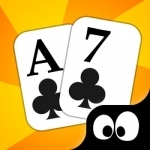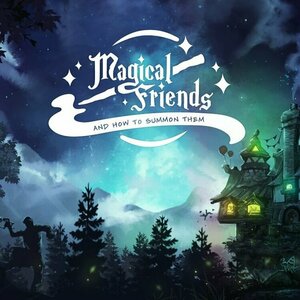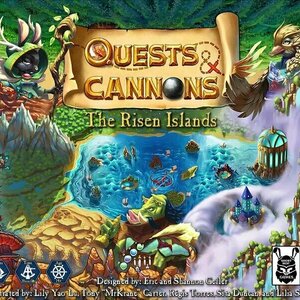
MUSIC.WITH.ME – Offline Player & Cloud Streamer
Music and Travel
App
*** Featured by Apple in 'Travel > Popular' *** As promoted by travelers and music lovers: 5 STARS:...
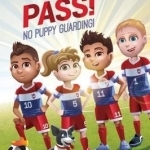
Pass! No Puppy Guarding!
Lindsay Little and Seth Little
Book
Bailee Kate and her dog Thor love to play soccer, but Thor always gets in the way. Coach says the...

Super Video D/L Player for Dropbox/iCloud/Clouds
Productivity and Utilities
App
Downloads and watches videos from your Dropbox, Google Drive, iCloud, OneDrive, Box, pCloud etc on...

InstaVid - Video Editor
Photo & Video and Entertainment
App
InstaVid - Video editor is an easy and simple video editor app with fast editing tools and filter...

Sing Karaoke - Unlimited Songs
Music and Utilities
App
√ Sing for free with YouTube media! No limits! Millions of free songs in the endless catalog of...
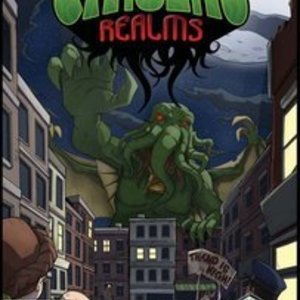
Cthulhu Realms
Tabletop Game
In Cthulhu Realms, each player tries to reduce their opponents to insanity or have more sanity than...

Bus
Tabletop Game
Prior to Essen 1999, a group of students created Splotter Spellen to sell some of their own game...
BoardGames PickUp& DeliverGames
Purple Phoenix Games (2266 KP) rated Magical Friends and How to Summon Them in Tabletop Games
Sep 29, 2021
Disclaimer: We were provided with a prototype copy of this game for the purposes of this preview. The components pictured are not finalized, and could change after a successful Kickstarter campaign. I do not intend to rehash the entire rulebook, but rather provide a general overview of the rules and gameplay. For more information, head to the Magical Friends website. -L
Magical Friends and How to Summon Them (referred to as just Magical Friends from hereon out) is a strategic game of card drafting and variable turn order in which players take on the roles of mages attempting to summon the most magical creatures to the local tavern in order to win the Midsummer festival competition. Played over 8 rounds, players will take turns summoning creatures, moving them towards the tavern, using special creature abilities, and occasionally fighting off your opponents’ creatures. The player who gets the most creatures to the tavern by the end of the 8th round is the winner! To setup for the game, lay out the main board and summoning board in the center of the table. Take the 4 double-sided map tiles, randomly choose a side, and place them in their corresponding places on the main board. Shuffle the Summoning cards and reveal a number of cards, determined by player count, to create a market row and preview row. Each player receives a player mat, heart tokens, and Artifact Cards in their chosen color. Place the round marker on Round 1 of the main board, select a player to get the starting player token, and the game is ready to begin!
To start a round, first you will need to determine turn order. Each player has an identical deck of 11 Artifact Cards, numbered 1-11. The player who offers the most powerful (highest number) Artifact gets to act first in the round. The player with the starting player token chooses their card first, and places it face-up on their player mat. The next player, in clockwise order, will do the same. Here’s the catch though – once a number has been played, it cannot be played by anyone else for this round! So say I put choose my value 8 card – no other player may choose that card for this round. Once all players have chosen their Artifacts, determine the turn order for the round. The player with the highest valued Artifact goes first, then the next highest, and so on.
Once the turn order has been determined, it is time for players to take their turns! On your turn, the first thing you will do is to select a Summoning card from the Summoning board and take it into their tableau. The selected card tells you which friend (creature) you have summoned, and tells you how many moves/what types of movement you may take this round. After choosing your Summoning card, you will take any/all of the following actions: Summon a friend (bring its standee into play), use basic movement (as determined by your new friend), use bonus movement (from other cards), or use the abilities of any friends in your tableau. You may perform as many of these actions as you want and are able to perform. It is important to note that each friend may only use one basic movement and one bonus movement per round. So you can’t just move a single friend with every movement available in one turn.
Once you are finished performing actions, you will end your turn. Refresh the Summoning board by shifting cards down and refilling any empty creature slots. Play then moves to the player with the next highest valued Artifact card. When all players have taken their turn, the round ends. Move the Round marker up one spot, and pass the starting player token to the next clockwise player. A new round will then start with the turn order determination, beginning with the new starting player. After 8 rounds of play, the winner is crowned. Players score points for the number of their friends who reached the tavern, and the player with the highest score wins!
I’ll come right out and say that I really have enjoyed Magical Friends. There are lots of elements that I like and that work well together to create a fun, strategic, and engaging game. First, turn order determination. I love that the turn order isn’t set for the entire game, because that could really be a detriment to whomever would be last every round. Being able to ‘bid’ for turn order, in a sense, allows players to be proactive (or conversely, reactive) with their strategy. And after you’ve used an Artifact card in a round, it is discarded and cannot be used for the rest of the game. So you need to decide when it’s worth it to play your high value cards to hopefully act first, or if you’re willing to risk playing a mid-value card that might be out-bid by an opponent.
The other awesome strategic element are the friends in the game. Each friend is a different creature with different movement options and special abilities during gameplay. An important thing to note is that although every friend has a printed movement value on its card, you may only ever use that value on the round in which you summon that friend. So a Griffin, for example, lets you move 3 friends 2 spaces, which you may do when you first summon the Griffin. But in future rounds, the Griffin will only move based on the movements provided by the most newly acquired friend. Maybe you don’t necessarily want to summon a Mermaid, but the movement she offers is exactly what you need to get some friends to the tavern for scoring. It’s all a neat mix of strategy that you are changing with every turn. Along with the movements, each friend has a special ability that can be used on your turns. Some abilities allow you to move extra spaces, move opponents, or even slay creatures. When you slay a creature, you collect its heart token for endgame scoring, and the player who controlled that creature gets a Pity Power card (which provide bonus movement). You need to decide when to move which friends, and in what order to trigger your abilities. You must always be paying attention to the board layout and your opponents’ turns as they will help you determine your strategy for future turns.
Components. As I mentioned earlier, this is a prototype version of the game, but with that said, the components are pretty nice! The cards are sturdy, the text is clear, and the artwork is fun to look at. The main game board and summoning boards are colorful, and the creature standees are nicely sized for the board. I do have to say that I really like the heart tokens used to identify to whom each creature belongs on the board. The hearts slide over top of the standee and create a base of sorts to color-code every creature on the board. Just a neat little use of components that make the gameplay smooth. And how about the insert? It’s awesome! The standees are all stored, assembled, in a slotted inlay that allows for quick selection of creatures. I hope that’s something that makes it to final production because it really helps streamline the gameplay. Some of the wording in the rulebook could use some clarification, but I know that it is still a work in progress and continues to undergo edits. The only negative I would have to say is that 2 of the player colors are black and gray – and they are sometimes difficult to differentiate between. But changing one color should be an easy fix!
All in all, I was pleasantly surprised by Magical Friends. At first glance, I thought it would be a pretty simple ‘roll-and-move’ type game, but it proved to be much more strategic and engaging than I initially thought. The variable turn order, the movement rules/restrictions, and the unique friend abilities all work together to create a cohesive, thematic, and strategic game. I very much am looking forward to following the progress of Magical Friends and How to Summon Them on Kickstarter, and I encourage you to check it out as well!
Purple Phoenix Games (2266 KP) rated Quests & Cannons in Tabletop Games
May 17, 2021
Quests & Cannons is a giant melting pot of mechanics rolled up into a cute little package with an interesting modular board with multiple setup options. In it, players take control of one of the aforementioned animal races and board their ships to claim islands and exploit their resources. The first player to amass 15 or 20 prosperity (VP) by the end of the game will reign victorious!
DISCLAIMER: We were provided a prototype copy of this game for the purposes of this review. These are preview copy components, and I do not know for sure if the final components will be any different from these shown. Also, it is not my intention to detail every rule in the game, as there are just too many. You are invited to download the rulebook, back the game through the Kickstarter campaign, or through any retailers stocking it after fulfillment. -T
There are so many steps to setup, and about a thousand bits and pieces, so I will save both your eyes and my fingers explaining. However, once setup, it should look somewhat similar to the photo below. Each player receives their own upgradeable ship board to track resources, action points, and other game-necessary components, along with a specific character and matching boat token.
On a turn, players will have three action points they may spend in any order on the following actions: Movement, Gather, Attack. Movement is one nautical hex in any direction per action point used, unless a player uses one of their sails. Sails add one hex to a movement and is spent for the rest of the round. The thing to keep in mind with movement is that different tiles affect movement in different ways, so luckily reference cards are included in the game. Once a ship discovers a new island, the player receives one coin and a Quest card in addition to flipping over the question mark Island Feature Tokens. These tokens show specific resources, which Quest cards require to be completed, at specific locations on the board.
Players can spend an action point to Gather resources from an island. Players are able to fill up their ships’ holds with as much of the resource as they wish, and it can be replaced with other resources on future turns.
Map Clues are cards that can be worked on during play, similar to Quest cards, and usually require an action point to be spent. These are special circumstances, and the action points are not available to be spent on every turn. Similar special circumstances include visits to Outposts, Trading Posts, and Starting Spaces. These spaces allow players to buy and sell items, and upgrade and repair ships.
The last option for action point spending is by attacking. A player may Attack another player when they share the same space on the board. The attacking player spends an action point to fire their cannons equipped on their ship. The ammo is tracked and represented by ammo dice. Once rolled, the attacker scores hull damage for every four pips rolled. If the ship takes as many or more hull damage than they have HP hearts, their ship sinks. Fortunately, this does not eliminate the player, but they lose many resources and coins, and will need to respawn at their starting location.
The player who earns 15 or 20 prosperity (depending on game mode) from attacking players, completing Quest and Map Clue cards, and possibly some other secret methods, will win Quests & Cannons and leads their race to eternal glory!
Components. Again, this is a prototype copy of the game, but I’ll tell you what, if the finished project comes with even slightly better components, it will be a monumental accomplishment. This is one of the highest-quality home-made prototypes I have ever received. I know most art and many items are final, but everything is on the table for upgrades, with a successful Kickstarter campaign. The colors are great, the art is fantastical and amazing, and it looks phenomenal on the table. I really enjoy the different characters with their unique special powers, and the double-layer ship player mats. Everything has its place and is organized beautifully. I am very excited to see the final product that Short Hop Games achieves!
This kind of game is really right up my alley: head-to-head combat (without player elimination), exploration, and pick-up-and-deliver. The only thing this is missing to be the perfect Travis game is a deck building element, but that certainly wouldn’t fit here. Quests & Cannons is chocked full of mechanics that, I believe, work really well together to provide a great game experience without adding a ton of complexity. The hexploration is strong, and the pick-up-and-deliver mechanic is tasty. All the mechanics, components, and artwork synergize so well that I am surprised this is a title from first-time designers and publisher.
What I like most is that though the rules are plentiful, once you get them down you have a wonderfully fun versatile game that can be played with many different group permutations and modes. The variety in setup options are endless, and the rulebook offers nine or ten different setups. The game also comes with lots of extra map bits, so any player could dream up several unique setup options at any time. The Quests are great, and the Loot cards (though I didn’t mention them in the overview) offer lots of ways to improve players’ strategies. With the abundance of upgrades available and unique special powers, this one is a big winner for me.
If you are in the market for something a little different, with a great theme and interesting combination of mechanics, then Quests & Cannons is certainly worth a look. I am very excited to follow the progress and the campaign for this one. I think backers will be receiving an incredible game with excellent components and tons of replayability. Now to challenge my wife so she can mop the poop deck with me.
